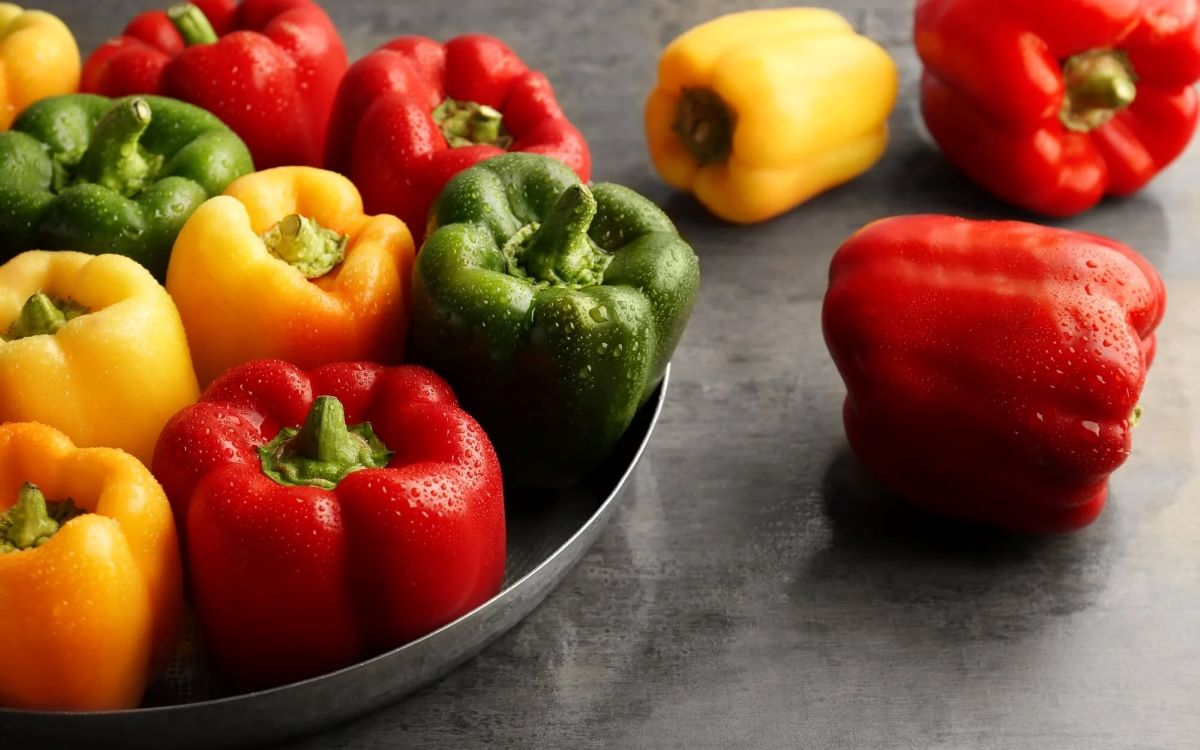

Articles
How To Store Bell Peppers To Last Longer
Modified: February 23, 2024
Discover how to store bell peppers to make them last longer with these helpful articles. Extend the shelf life of your peppers and enjoy their freshness for longer.
(Many of the links in this article redirect to a specific reviewed product. Your purchase of these products through affiliate links helps to generate commission for Storables.com, at no extra cost. Learn more)
Introduction
Welcome to our guide on how to store bell peppers to last longer! Bell peppers are a versatile and nutritious vegetable that can add color and flavor to a variety of dishes. Whether you grow your own or purchase them from a local market, knowing how to properly store bell peppers is essential to maximize their shelf life and keep them fresh for as long as possible.
Proper storage not only helps to preserve the taste and texture of bell peppers but also ensures that you get the most out of your purchase. In this article, we will discuss the importance of storing bell peppers correctly, factors that affect their shelf life, and various storage methods to help extend their freshness.
So, whether you have an abundance of bell peppers from your garden or have bought them in bulk, this guide will provide you with valuable tips and tricks to make the most out of your bell peppers and reduce food wastage.
Let’s dive into the details of how to properly store bell peppers!
Key Takeaways:
- Proper storage of bell peppers preserves their freshness, nutrition, and flavor, reducing food waste and saving money. Refrigeration, freezing, and drying are effective methods to extend their shelf life.
- Selecting fresh bell peppers, proper preparation, and careful packaging are essential for maximizing the longevity of bell peppers. Following these steps ensures delicious and vibrant bell peppers for future culinary creations.
Read more: How To Store Peppers To Last Longer
Why Storing Bell Peppers Properly Is Important
Properly storing bell peppers is crucial for several reasons. First and foremost, it helps to maintain their freshness and extend their shelf life. By storing bell peppers correctly, you can avoid premature spoilage and ensure that you can enjoy them over a longer period.
Moreover, storing bell peppers properly helps retain their nutritional value. Bell peppers are rich in essential vitamins, such as vitamin C, vitamin A, and various antioxidants. These nutrients can deteriorate over time when exposed to unfavorable storage conditions, such as excessive heat or moisture. By storing bell peppers properly, you can help preserve their nutritional content and reap the health benefits they offer.
Furthermore, proper storage can save you money. Bell peppers can be quite expensive, especially when they are out of season. By storing them correctly, you can prevent wastage and avoid having to frequently repurchase them. This not only helps you save money but also reduces food waste, contributing to a more sustainable lifestyle.
Lastly, proper storage allows you to have bell peppers readily available for your cooking needs. Whether you use bell peppers in salads, stir-fries, or as a topping for pizza, having fresh and vibrant bell peppers at hand makes it easier to incorporate them into your culinary creations.
Overall, understanding the importance of proper bell pepper storage ensures that you get the best quality bell peppers, both in taste and nutrition. So, let’s explore the factors that affect bell pepper shelf life and learn how to select the freshest bell peppers for storage!
Factors That Affect Bell Pepper Shelf Life
Several factors can influence the shelf life of bell peppers. Understanding these factors will help you take appropriate measures to ensure their freshness and longevity.
1. Ripeness: The level of ripeness of bell peppers at the time of purchase plays a significant role in determining their shelf life. Fully ripe bell peppers have a shorter shelf life compared to those that are slightly underripe. Therefore, it is advisable to select bell peppers that are firm, with bright and vibrant colors.
2. Temperature: Bell peppers are sensitive to temperature and should be stored in a cool environment. Exposing them to high temperatures can accelerate the deterioration process and lead to spoilage. Ideally, bell peppers should be stored at temperatures between 45°F and 50°F (7°C and 10°C).
3. Moisture: Excess moisture can cause bell peppers to rot quickly. It is essential to keep them dry and avoid any contact with water or excessive humidity. Moisture promotes the growth of mold and bacteria, leading to spoilage.
4. Air circulation: Bell peppers require proper air circulation to maintain their freshness. Storing them in a well-ventilated area allows for the removal of ethylene gas, which is released by the peppers as they ripen. Ethylene gas can accelerate the ripening process and lead to faster deterioration.
5. Damage and bruising: Bell peppers are prone to damage and bruising, which can accelerate their decay. It is essential to handle bell peppers gently and store them in a way that minimizes any potential damage or bruising.
By considering these factors, you can take the necessary steps to ensure optimal storage conditions for your bell peppers. Next, let’s explore how to select fresh bell peppers for storage.
How to Select Fresh Bell Peppers for Storage
Choosing the right bell peppers at the time of purchase is crucial for their longevity in storage. Here are a few tips to help you select fresh bell peppers:
1. Inspect the appearance: Look for bell peppers that have a vibrant color and a smooth, shiny skin. Avoid peppers that have wrinkled or dull skin, as it may indicate age or poor quality.
2. Check for firmness: Gently press the bell pepper. It should feel firm and have a slight give. Avoid peppers that have soft spots or feel mushy, as these are signs of spoilage.
3. Consider the size: Choose bell peppers that are uniform in size and shape. This ensures even ripening and consistent texture.
4. Inspect the stem: The stem of the bell pepper should be green and fresh-looking. Avoid peppers with dried or shriveled stems, as it indicates that they have been sitting for too long.
5. Avoid blemishes: Look out for any signs of damage, such as cuts, bruises, or mold, on the bell peppers. Blemishes can accelerate deterioration and lead to spoilage.
6. Consider the weight: Bell peppers should feel heavy for their size. Heavier peppers indicate a higher water content and are generally fresher.
7. Smell: Give the bell pepper a sniff. It should have a fresh, mild aroma. If it has a strong or unpleasant odor, it may be a sign of decay.
By following these guidelines, you can ensure that you select the freshest bell peppers for storage. Once you have chosen the perfect peppers, the next step is to prepare them properly before storage.
Preparation Before Storage
Before storing bell peppers, it’s essential to properly prepare them to maximize their shelf life. Here are some steps to follow:
1. Wash and dry: Start by washing the bell peppers under cold running water. Gently rub them with your hands to remove any dirt or debris. After washing, thoroughly pat them dry with a clean kitchen towel or paper towels. Ensuring the bell peppers are completely dry helps prevent moisture buildup, which can lead to rotting.
2. Remove stems and seeds: Cut off the stem of each bell pepper using a sharp knife. Then, slice the peppers in half lengthwise and scoop out the seeds and any white pith. If you prefer, you can also remove the ribs (the white flesh inside the peppers) for a milder taste.
3. Cut into desired shapes: Depending on your preference, you can cut the bell peppers into slices, strips, or dice them. Consider how you plan to use the peppers in your recipes later to determine the desired shape. It’s best to cut them just before you plan to use them to maintain maximum freshness.
4. Separate into portions: If you’re planning to use the peppers in smaller quantities, divide them into portions that you typically use in your recipes. This way, you can easily grab the desired amount without exposing the remaining peppers to air and moisture, which can spoil them quicker.
By following these preparation steps, you’ll have bell peppers ready for storage. Now you can explore the different storage methods available to keep your bell peppers fresh and flavorful for an extended period. Let’s dive in!
Read more: How To Store A Bell Pepper
Different Storage Methods for Bell Peppers
There are various storage methods available to keep bell peppers fresh and preserve their flavor and texture. Let’s explore the different options:
- Refrigeration: Storing bell peppers in the refrigerator is one of the most common and effective methods. Wrap each bell pepper individually in a paper towel to absorb excess moisture and place them in a perforated plastic bag or a vegetable crisper drawer. The paper towel helps prevent moisture buildup, while the plastic bag or drawer maintains a stable and slightly humid environment. Bell peppers can typically stay fresh in the refrigerator for up to 1-2 weeks.
- Freezing: Freezing bell peppers is an excellent option if you have a surplus or want to store them for an extended period. Start by washing and drying the peppers, then remove the stems, seeds, and white pith. Cut them into desired shapes, such as strips or dice. Blanch the peppers by briefly immersing them in boiling water, followed by an immediate plunge into an ice bath to stop the cooking process. Drain and pat them dry before transferring them to freezer-safe bags or containers. Frozen bell peppers can last for up to 10-12 months in the freezer.
- Drying: Drying bell peppers is another method to extend their shelf life and intensify their flavors. Start by washing and drying the peppers, then cut them into thin strips or rings. Remove the seeds and ribs if desired. Arrange the pepper pieces on a baking sheet in a single layer and place them in an oven set to the lowest temperature or use a food dehydrator. Dry the peppers until they become leathery and brittle. Once dried, store them in an airtight container in a cool, dark place. Dried bell peppers can last for several months.
- Pickling: Pickling bell peppers is a great way to preserve them and add a tangy flavor. Start by washing and slicing the peppers into rings or strips. Bring a mixture of vinegar, water, sugar, salt, and spices to a boil, then add the pepper slices and simmer for a few minutes. Transfer the peppers along with the pickling liquid into sterilized jars and seal them tightly. Allow the pickled peppers to sit in the refrigerator for a couple of weeks before consuming. Pickled bell peppers can stay good for up to 6-8 months.
Choose the storage method that best suits your needs and preferences. Whether you opt for refrigeration, freezing, drying, or pickling, these methods will help you prolong the shelf life of your bell peppers and ensure they remain delicious for future use.
Next, let’s discuss the specific steps involved in storing bell peppers in the refrigerator, freezing them, and drying them for long-term storage.
Storing Bell Peppers in the Refrigerator
Refrigeration is a popular and effective method for storing bell peppers. Here are the specific steps to store bell peppers in the refrigerator:
- Preparation: Start by washing the bell peppers under cold running water to remove any dirt or debris. Pat them dry with a clean kitchen towel or paper towels to remove excess moisture. This step is crucial to prevent moisture buildup and maintain the peppers’ freshness.
- Individually wrap: Wrap each bell pepper individually in a paper towel. The paper towel will absorb any excess moisture and help prevent the peppers from spoiling quickly. Wrapping them individually also prevents the spread of any potential mold or rot from one pepper to another.
- Storage container: Place the wrapped bell peppers in a perforated plastic bag or a vegetable crisper drawer in your refrigerator. The perforations allow for some air circulation and help maintain a slightly humid environment, which is ideal for bell peppers.
- Temperature: Set your refrigerator to a temperature between 45°F and 50°F (7°C and 10°C). This range provides an optimal environment for bell pepper storage and helps extend their shelf life.
- Check periodically: Periodically check the bell peppers for any signs of spoilage, such as softening, mold, or discoloration. Remove any peppers that show signs of spoilage to prevent it from spreading to the rest.
When stored properly in the refrigerator, bell peppers can stay fresh for up to 1-2 weeks. Remember to use the bell peppers as soon as possible, as their quality and flavor will gradually decline over time.
Now that you know how to store bell peppers in the refrigerator, let’s move on to the process of freezing bell peppers for long-term storage.
Store bell peppers in the crisper drawer of the refrigerator, unwashed and in a perforated plastic bag to maintain moisture. Avoid storing them near ethylene-producing fruits to prevent them from ripening too quickly.
Freezing Bell Peppers for Long-term Storage
Freezing bell peppers is an excellent option if you have an abundance of peppers or want to store them for an extended period. Here’s a step-by-step guide on how to freeze bell peppers:
- Preparation: Start by washing the bell peppers under cold running water to remove any dirt or debris. Pat them dry with a clean kitchen towel or paper towels to remove excess moisture.
- Cutting and seeding: Remove the stems and cut the bell peppers into desired shapes, such as strips, slices, or dice. Remove the seeds and the white pith from the peppers.
- Blanching: Blanching helps preserve the texture, color, and nutrients of bell peppers. Bring a large pot of water to a boil, then carefully place the pepper pieces in the boiling water. Allow them to blanch for about 2-3 minutes. Remove the peppers from the boiling water and immediately transfer them to an ice bath to stop the cooking process.
- Draining and drying: Drain the blanched bell peppers and pat them dry with a kitchen towel or paper towels. Ensuring they are dry helps prevent the formation of ice crystals and freezer burn during freezing.
- Packaging: Place the prepared bell peppers in freezer-safe bags or airtight containers. Squeeze out any excess air from the bags before sealing to minimize freezer burn. Alternatively, you can flash freeze the pepper pieces on a baking sheet before transferring them into containers to prevent them from sticking together.
- Labeling and dating: Don’t forget to label the bags or containers with the date of freezing. This will help you keep track of their freshness and ensures that you use the oldest peppers first.
- Freezing: Place the packed bell peppers in the freezer and make sure they are arranged in a way that allows for proper airflow. Avoid overcrowding or stacking them, as this can result in uneven freezing and potential damage.
Frozen bell peppers can be stored in the freezer for up to 10-12 months. They are best used in cooked dishes like stir-fries, soups, stews, or casseroles, as the texture changes after freezing. Remember to thaw the frozen bell peppers before using them in your recipes.
Now that you know how to freeze bell peppers, let’s explore the process of drying bell peppers for an extended shelf life.
Drying Bell Peppers for Extended Shelf Life
Drying bell peppers is a great way to preserve their flavor and extend their shelf life. Here’s a step-by-step guide on how to dry bell peppers:
- Preparation: Start by washing the bell peppers under cold running water to remove any dirt or debris. Pat them dry with a clean kitchen towel or paper towels to remove excess moisture.
- Cutting and cleaning: Remove the stems and cut the bell peppers into thin strips or rings. Remove the seeds and the white pith if desired. The smaller the pieces, the faster they will dry.
- Drying method: There are a few methods you can use for drying bell peppers. One common method is using an oven. Preheat your oven to its lowest temperature (usually around 150°F or 65°C). Place the bell pepper pieces on a baking sheet lined with parchment paper or a silicone mat, making sure they are spread out in a single layer. Leave the oven door slightly ajar for air circulation. Dry the peppers in the oven for several hours, checking periodically until they become leathery and brittle.
- Alternative drying methods: If you prefer, you can also use a food dehydrator to dry the bell peppers. Follow the manufacturer’s instructions for drying time and temperature settings. Another option is air-drying. Hang the pepper strips in a well-ventilated area, away from direct sunlight, until they become dry and brittle.
- Cooling and storing: Once the bell peppers are dry, remove them from the oven or dehydrator and allow them to cool completely. They should be crisp and brittle to the touch. Store the dried bell peppers in an airtight container in a cool, dark place to protect them from light and moisture.
- Checking for moisture: Check the dried bell peppers periodically for any signs of moisture or mold. If you notice any, discard the affected peppers to prevent spoilage.
Dried bell peppers can be used in various culinary preparations, such as soups, stews, salads, sauces, or as a flavor-boosting ingredient in spice blends. Enjoy the intense, concentrated flavor and vibrant color of dried bell peppers in your dishes.
Now that you have learned how to dry bell peppers, you can explore the proper packaging and container options for storing them.
Read more: How To Store Bell Peppers
Proper Packaging and Container Options
Proper packaging is crucial for preserving the quality and extending the shelf life of stored bell peppers. Here are some packaging and container options to consider:
- Freezer bags: If you’re freezing bell peppers, use heavy-duty freezer bags that are designed to resist moisture and prevent freezer burn. Squeeze out any excess air before sealing the bags to minimize the risk of freezer burn. Label the bags with the date of freezing for easy identification.
- Plastic containers: Freezer-safe, airtight plastic containers are a good option for freezing bell peppers. They provide better protection against freezer burn and help keep the peppers fresh. Make sure to leave some headspace to allow for any expansion during freezing.
- Glass jars: Glass jars with tight-fitting lids are suitable for storing dried bell peppers. Ensure that the peppers are thoroughly dried before placing them in the jars to prevent the growth of mold or bacteria. Store the jars in a cool, dark place away from direct sunlight.
- Vacuum sealing: Vacuum sealing is an excellent method for removing air and maintaining the freshness of bell peppers. It helps to prolong their shelf life and protect the peppers from freezer burn. Use a vacuum sealer machine or bags specifically designed for this purpose.
- Paper bags: For short-term storage in the refrigerator, you can place bell peppers in perforated paper bags. The paper helps absorb any excess moisture while allowing for slight air circulation.
- Zip-top bags: Zip-top bags are suitable for storing bell peppers in the refrigerator or pantry. Make sure to remove as much air as possible before sealing the bags to minimize moisture buildup.
Remember to label the packaging or containers with the date of storage to keep track of freshness. Additionally, always choose high-quality, food-grade containers to ensure the best preservation of your bell peppers.
Now that you’re familiar with proper packaging, let’s explore some helpful tips and tricks for extending the shelf life of bell peppers.
Tips and Tricks for Extending Bell Pepper Shelf Life
Here are some helpful tips and tricks to extend the shelf life of bell peppers:
- Handle with care: Bell peppers are delicate and can bruise easily. Handle them gently to avoid causing any damage or bruising, as this can accelerate their decay.
- Store unwashed: It’s best to store bell peppers unwashed until you’re ready to use them. Washing them prematurely can introduce excess moisture, leading to faster spoilage.
- Avoid direct contact with moisture: Moisture can cause bell peppers to rot quickly. Make sure they are completely dry before storage, and avoid any direct contact with water or excessive humidity.
- Separate from ethylene-producing fruits: Ethylene gas can speed up the ripening process and cause bell peppers to deteriorate faster. Keep bell peppers away from ethylene-producing fruits like bananas, apples, and tomatoes.
- Check regularly: Periodically inspect your stored bell peppers for any signs of spoilage, such as softening, mold, or discoloration. Remove any affected peppers promptly to prevent the spread of decay.
- Use or preserve at peak freshness: Bell peppers are most flavorful and nutritious when fresh. Try to use them within a week of purchase or adapt various preservation methods, such as freezing or drying, to enjoy them for an extended period.
- Revive wilted bell peppers: If your bell peppers have become slightly wilted, you can revive them by placing them in a bowl of ice water for 15-20 minutes. This can help restore their crispness and freshness.
- Don’t overbuy: To minimize food waste, only purchase the quantity of bell peppers that you can realistically consume within a reasonable timeframe. This ensures that you always have fresh peppers on hand.
- Rotate your stock: If you regularly buy bell peppers, make sure to rotate your stock. Use the older ones first before moving on to the fresher ones. This prevents any peppers from being forgotten and left to spoil.
- Consider canning: If you have an abundance of bell peppers, consider canning them for long-term storage. Follow proper canning procedures to ensure safety and optimal shelf life.
By following these tips and tricks, you can prolong the shelf life of bell peppers and reduce food waste. Whether you’re using them fresh, freezing, drying, or preserving in other ways, these strategies will help you enjoy flavorful bell peppers for an extended period.
Now, let’s address some frequently asked questions (FAQs) related to storing bell peppers.
Frequently Asked Questions (FAQs)
Here are some commonly asked questions about storing bell peppers:
1. How long do bell peppers last?
The shelf life of bell peppers depends on various factors, including their ripeness at the time of purchase and the storage conditions. Typically, bell peppers can last for 1-2 weeks when stored in the refrigerator. However, freezing or drying them can extend their shelf life for several months.
2. Can bell peppers be stored at room temperature?
While bell peppers can be stored at room temperature for a short period, it’s best to store them in the refrigerator to prolong their freshness. Room temperatures can accelerate the ripening process and lead to quicker spoilage.
3. Can bell peppers be stored alongside other fruits and vegetables?
Although bell peppers can be stored alongside some fruits and vegetables, it’s important to keep them away from ethylene-producing fruits like bananas, apples, and tomatoes. Ethylene gas can cause bell peppers to ripen and deteriorate faster.
4. Can you freeze bell peppers without blanching?
Blanching bell peppers before freezing helps preserve their flavor, texture, and color. It also helps to kill off any bacteria present on the peppers. While it’s possible to freeze bell peppers without blanching, they may lose quality and have a slightly softer texture after thawing.
5. How do you know if bell peppers have gone bad?
Signs that bell peppers have gone bad include softening, mold growth, discoloration, a foul odor, or a slimy texture. If you notice any of these signs, discard the peppers to avoid any risk of illness.
6. Can you store cut bell peppers?
If you have leftover cut bell peppers, it’s best to wrap them tightly in plastic wrap and store them in the refrigerator. They may not stay as crisp and fresh as whole bell peppers, but they can still be used within a day or two.
7. Can you rehydrate dried bell peppers?
Yes, you can rehydrate dried bell peppers by soaking them in warm water for about 20-30 minutes until they become soft and pliable. Drain the rehydrated peppers before using them in your dishes.
8. Can you store bell peppers in oil?
It’s not recommended to store bell peppers in oil at room temperature, as this can create an environment conducive to the growth of harmful bacteria. However, you can store roasted bell peppers in oil in the refrigerator for a short period (up to a week) if properly sterilized and handled.
Remember to always exercise caution and use your best judgment when storing and consuming bell peppers. When in doubt, it’s better to err on the side of caution and discard any bell peppers that you suspect may be spoiled.
Now that we’ve covered some FAQs, let’s wrap up our guide on storing bell peppers.
Conclusion
Knowing how to store bell peppers properly is essential for maximizing their shelf life, preserving their flavor, and reducing food waste. Whether you’re growing your own bell peppers or purchasing them from the market, following the right storage methods can help you enjoy fresh bell peppers for an extended period.
In this guide, we’ve covered various storage methods for bell peppers, including refrigeration, freezing, and drying. Each method has its advantages and allows you to choose the one that best fits your needs and preferences.
Remember to select fresh bell peppers with vibrant colors, firm textures, and fresh stems. Properly prepare them by washing, drying, and removing any seeds or pith before storage. Consider the factors that affect their shelf life, such as temperature, moisture, and air circulation.
Refrigerating bell peppers in perforated plastic bags or crisper drawers is ideal for short-term storage, while freezing is a great option for long-term preservation. Drying bell peppers intensifies their flavor and allows for extended shelf life. Proper packaging in freezer bags, containers, or glass jars helps protect the peppers and prevent freezer burn or moisture absorption.
To extend the shelf life of bell peppers, handle them with care, store them unwashed, and regularly check for any signs of spoilage. Revive wilted peppers by placing them in ice water to restore their crispness.
By following these tips and tricks, you can make the most out of your bell peppers, reduce food waste, and enjoy their delicious flavors in a variety of dishes.
So, the next time you have bell peppers on hand, remember the knowledge and techniques shared in this guide to store them properly and make them last longer. Enjoy the versatility and health benefits of bell peppers in your favorite recipes all year round.
Happy bell pepper storage and bon appétit!
Frequently Asked Questions about How To Store Bell Peppers To Last Longer
Was this page helpful?
At Storables.com, we guarantee accurate and reliable information. Our content, validated by Expert Board Contributors, is crafted following stringent Editorial Policies. We're committed to providing you with well-researched, expert-backed insights for all your informational needs.
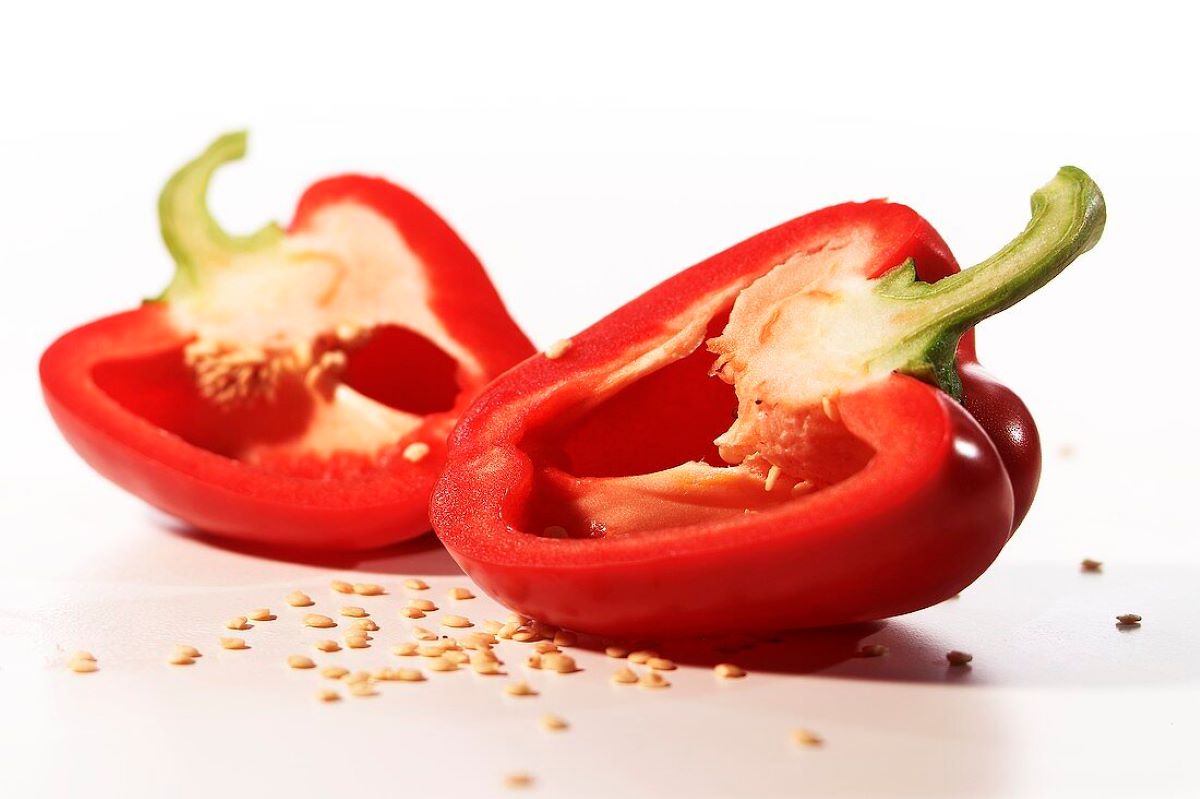
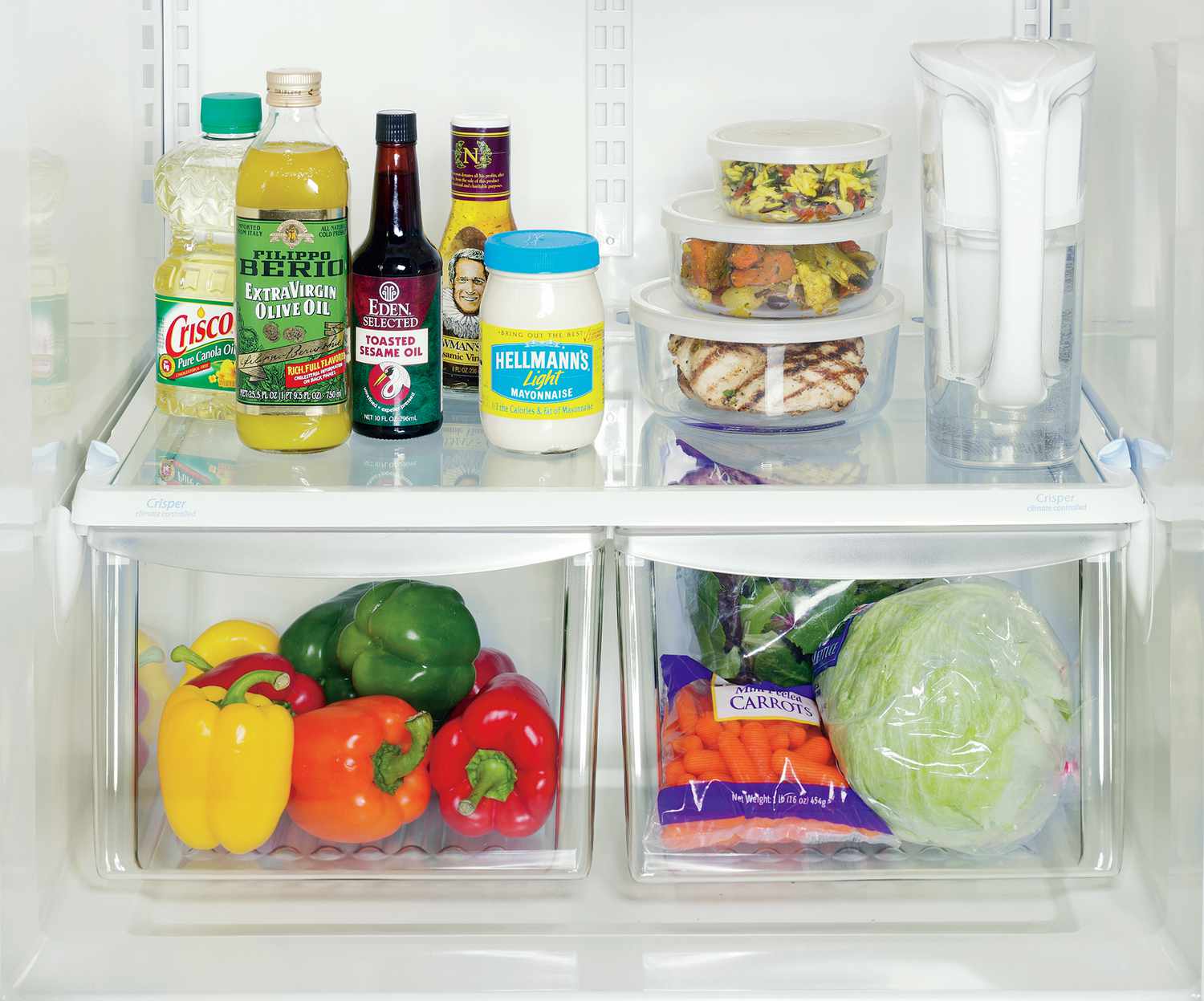
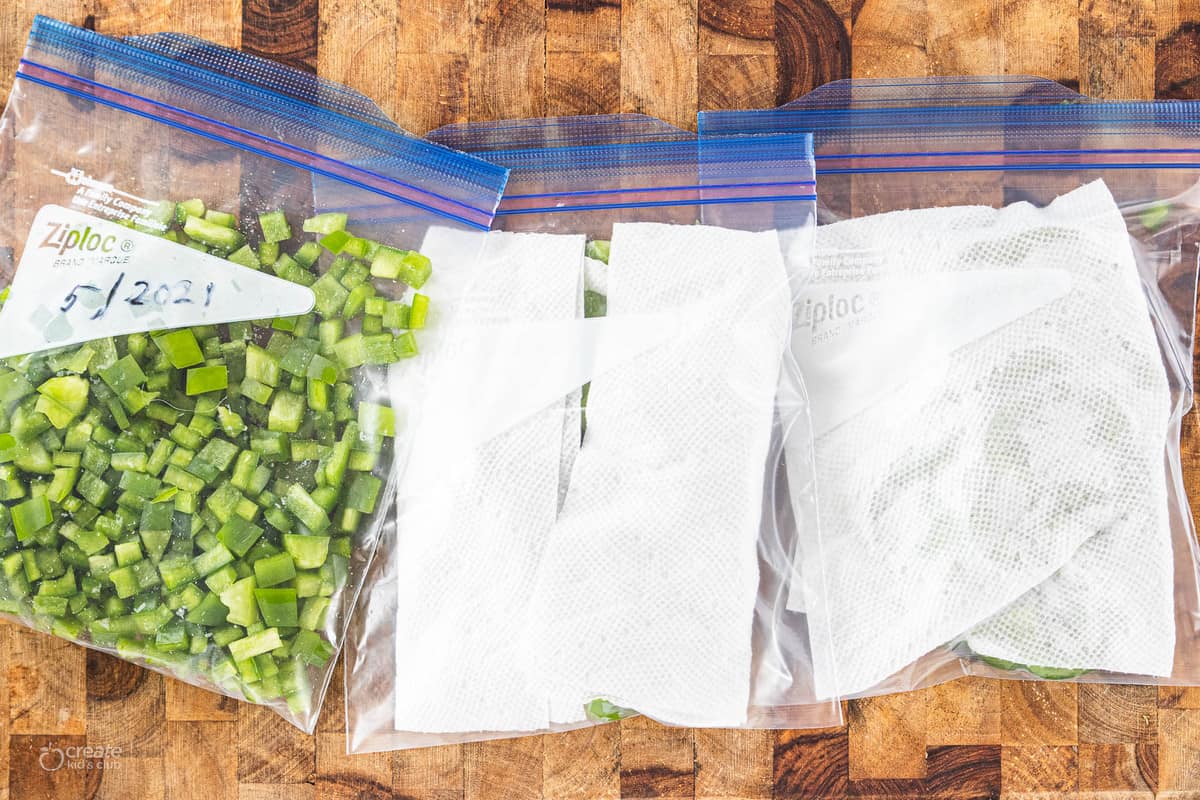
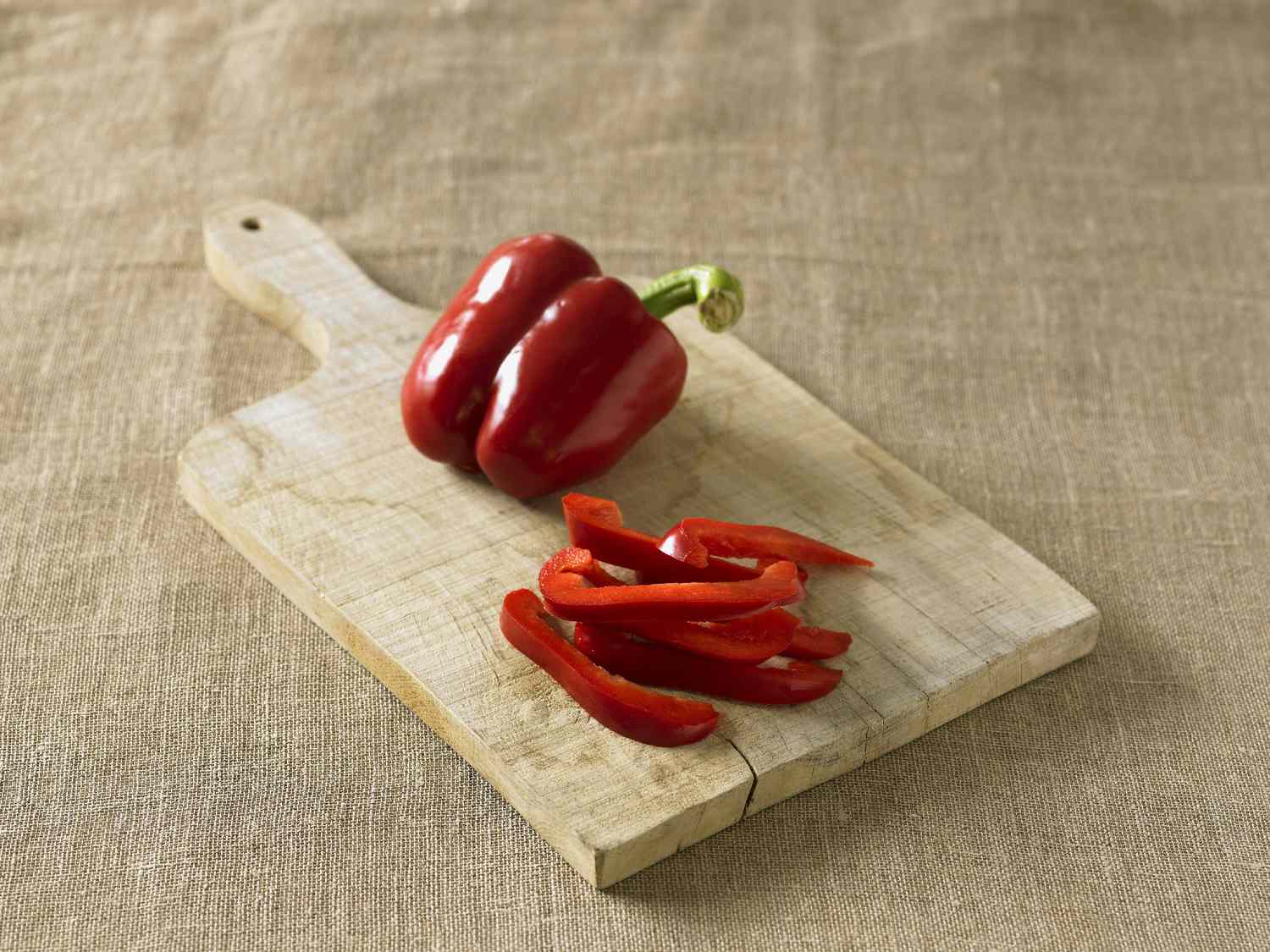
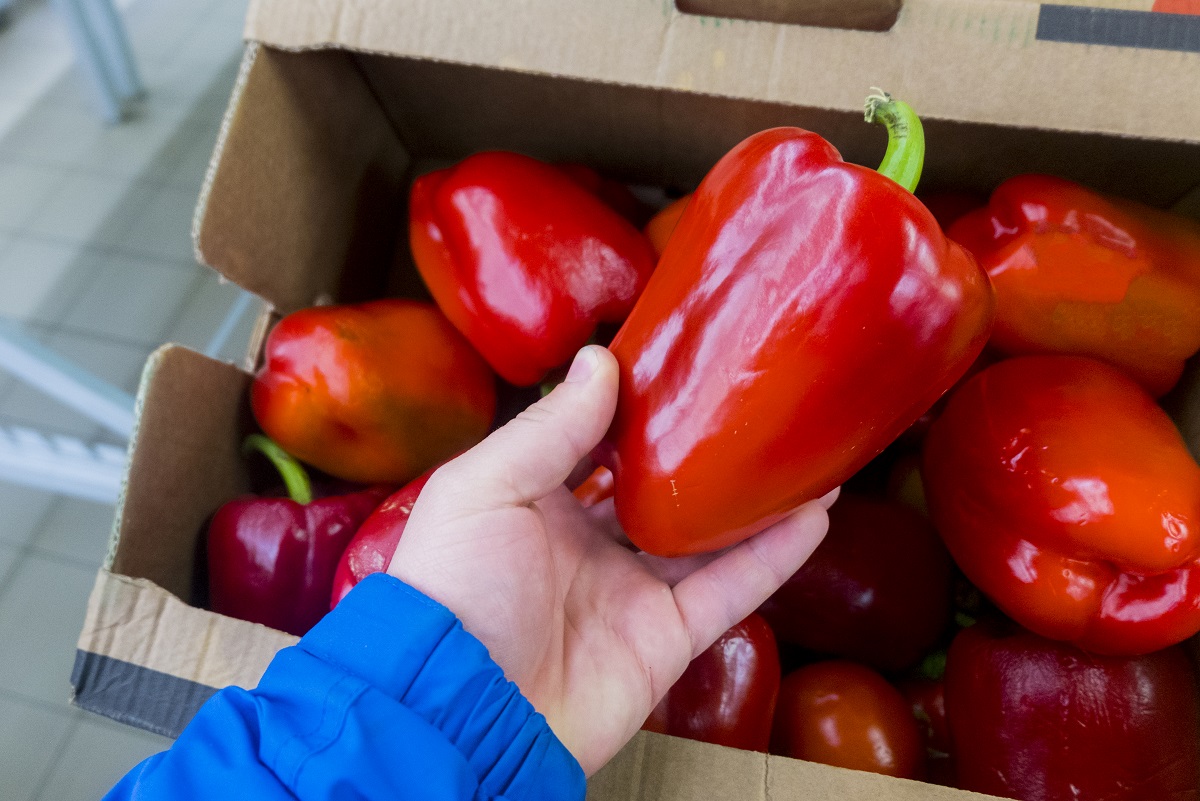
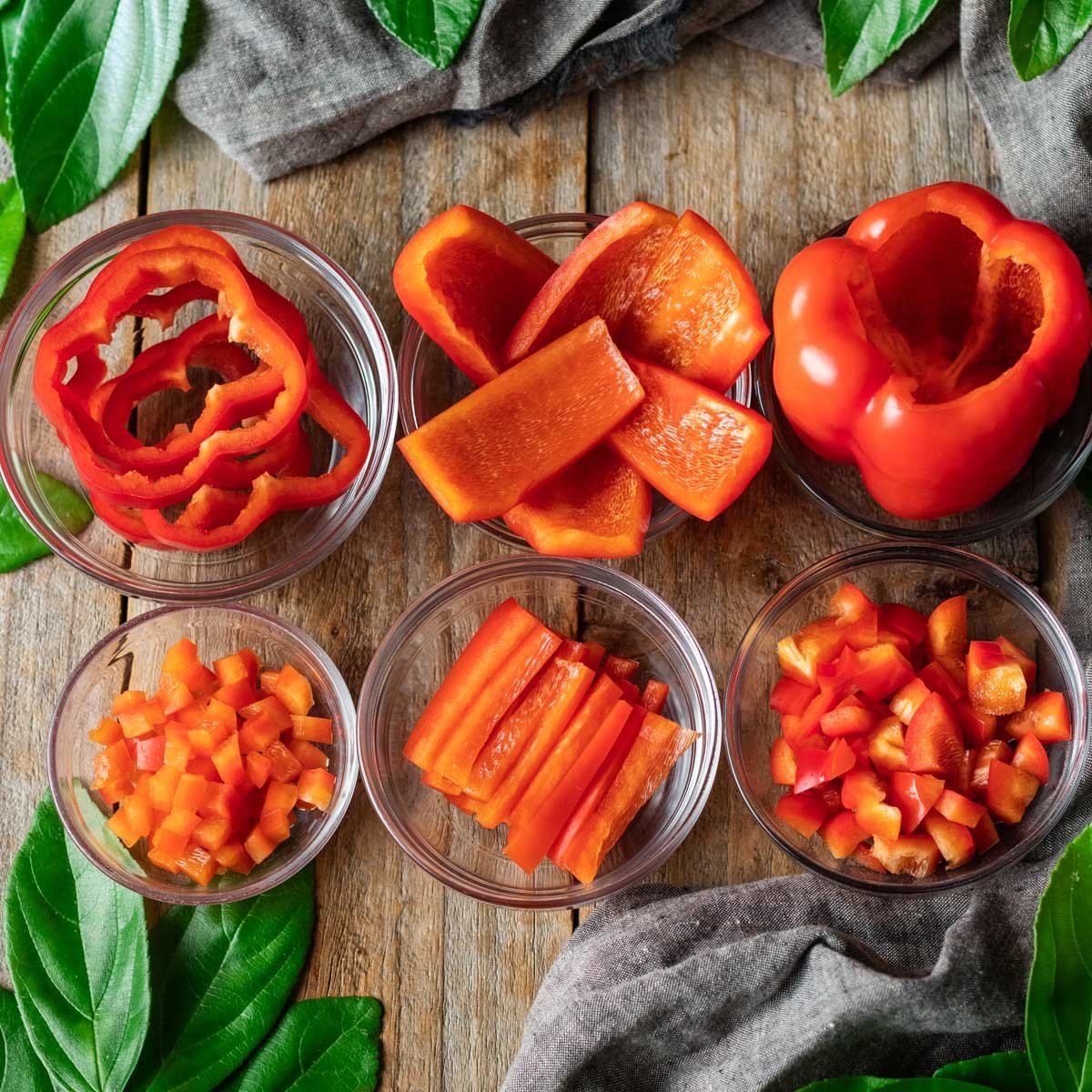
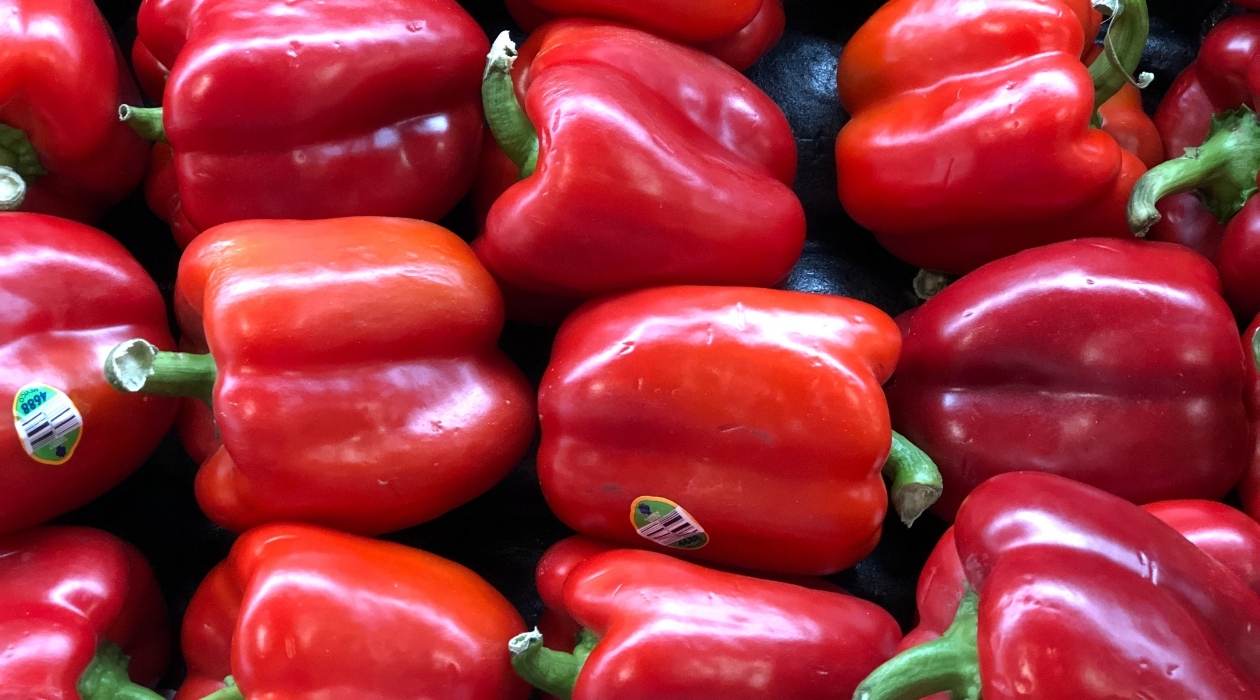
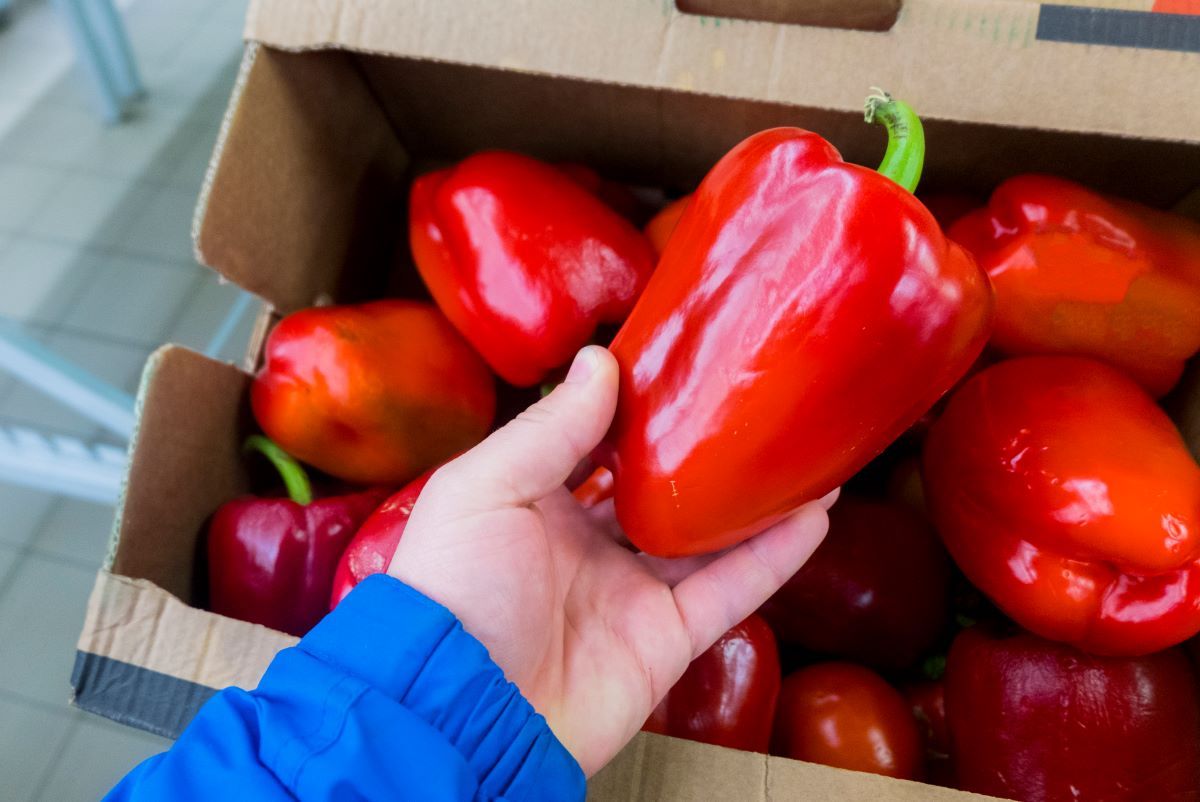
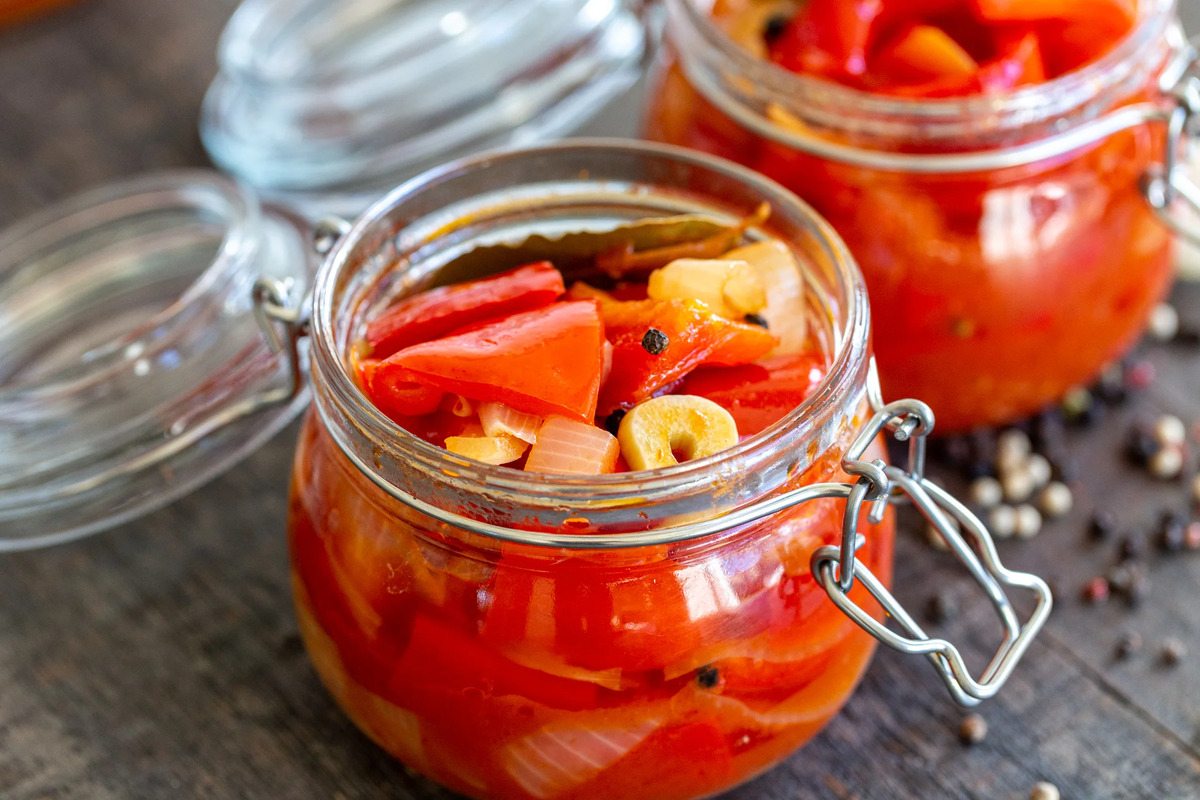
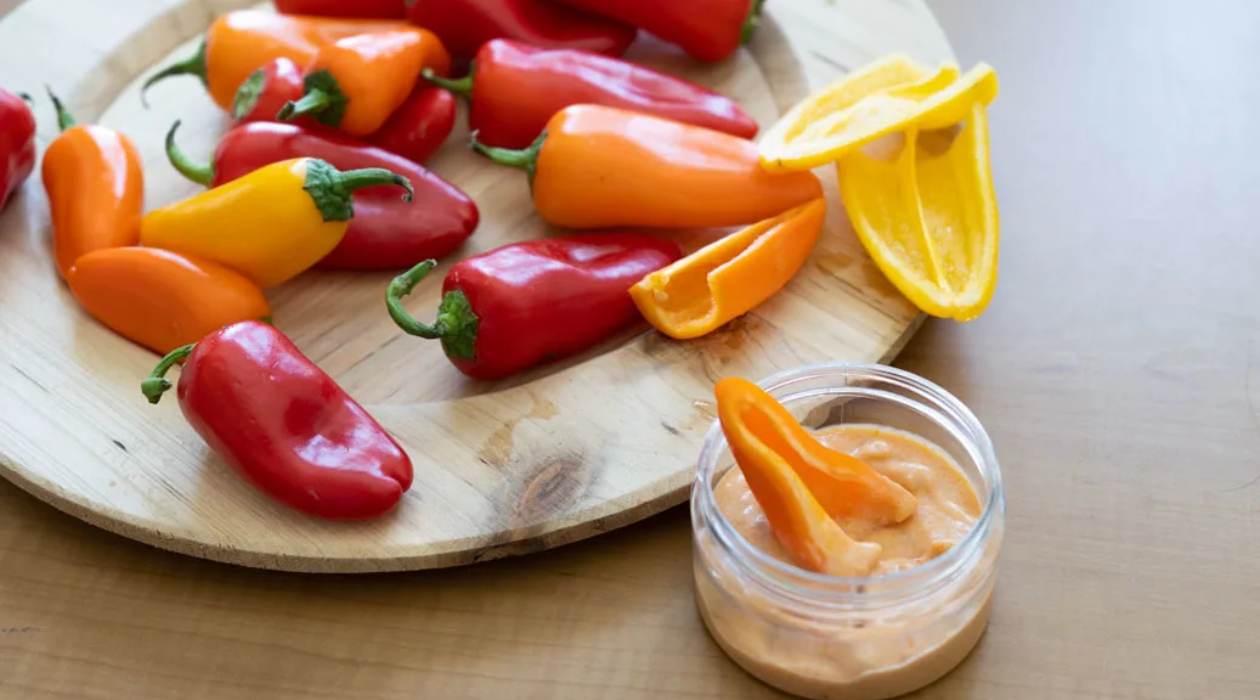
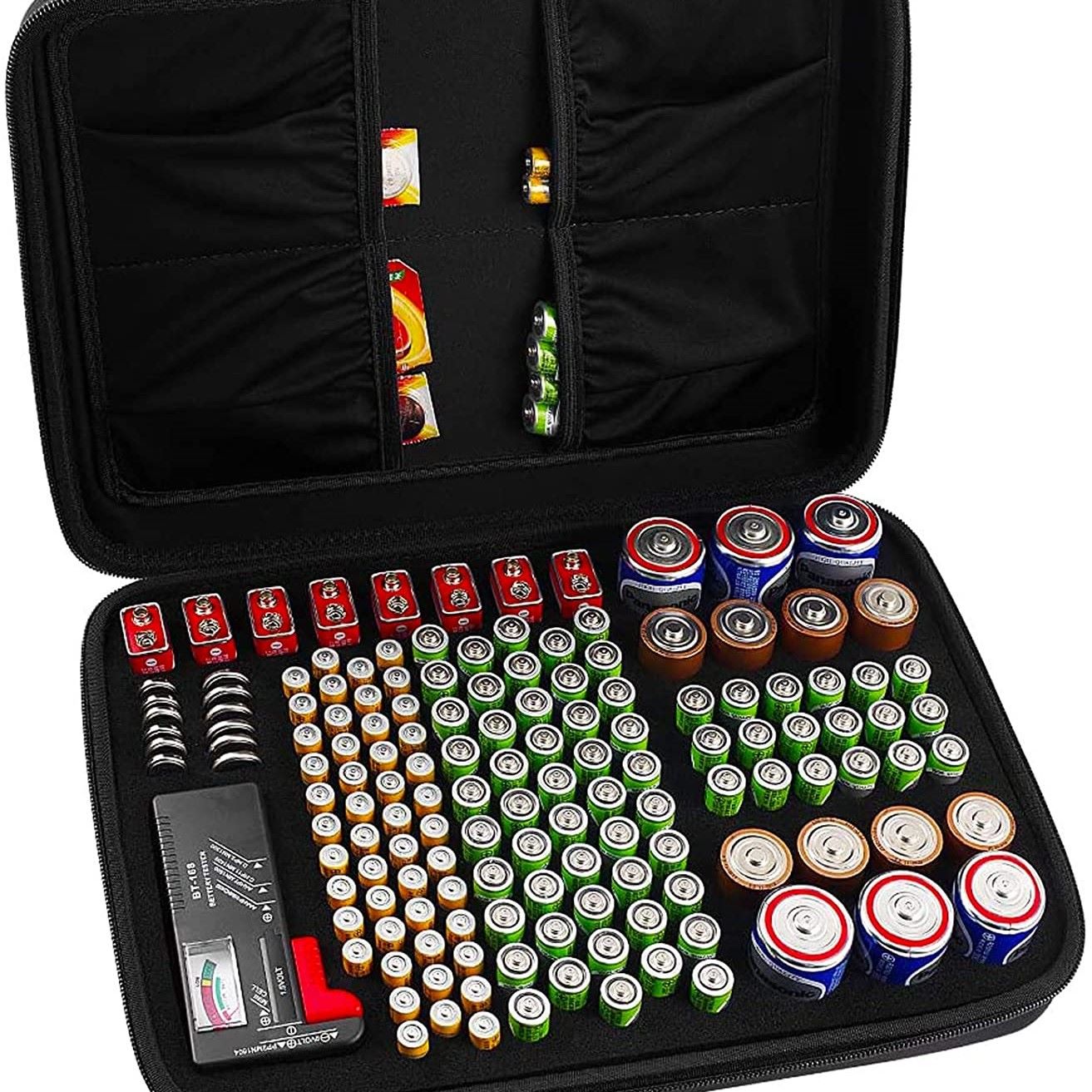

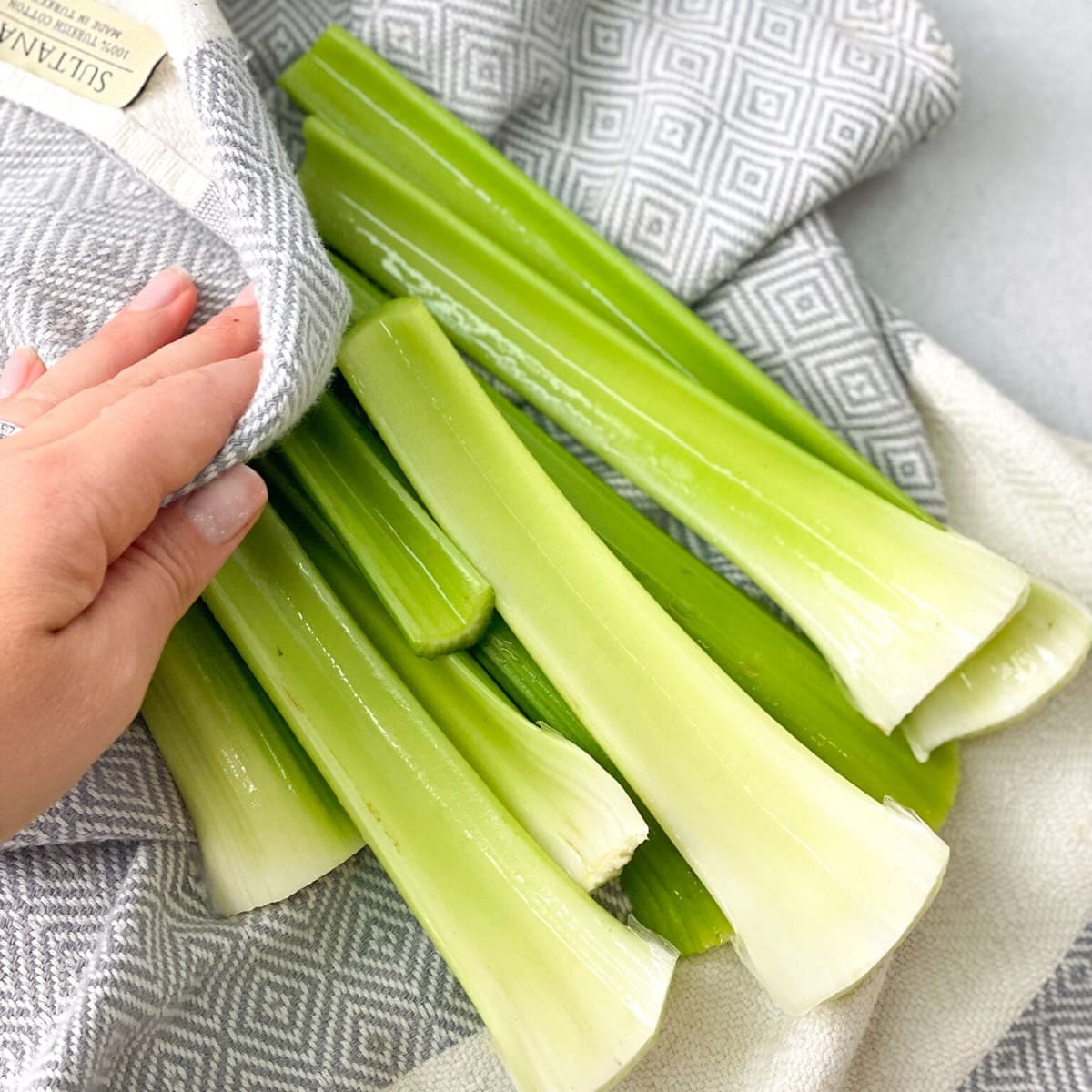

0 thoughts on “How To Store Bell Peppers To Last Longer”